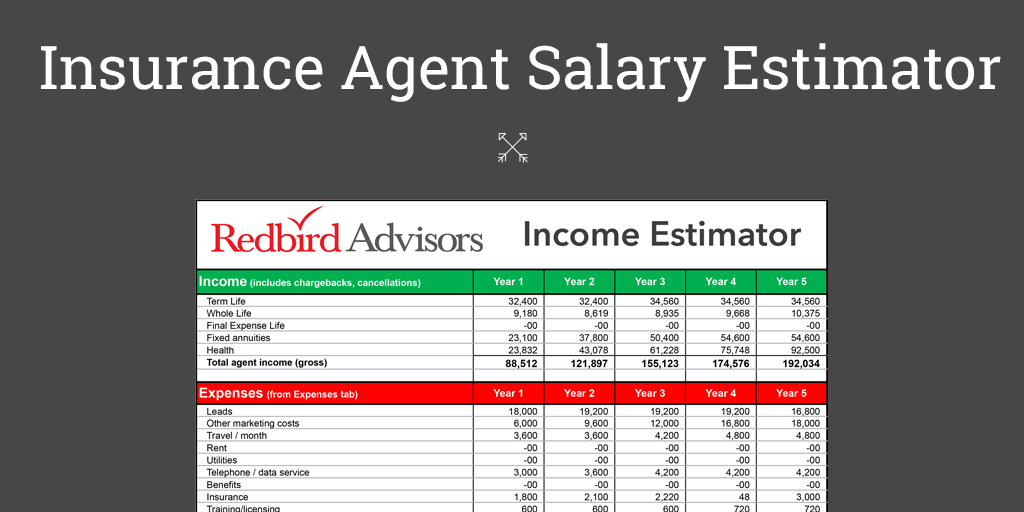
Guest Author: Jonathon Baker, M&A Specialist
One of the questions I get asked a lot—and it’s a question that almost always makes me smile—goes something like this:
“Hey, what’s the going EBITDA multiple for an insurance agency like mine?”
I smile because if valuing a firm is that easy, I should be jailed for charging $5,000 for a valuation. (Though a professional used to charge $1,000 to tell you what your firm is worth, and it was always the equivalent of 1x your AGI/Gross Profit. I mean, if you’re gonna scam someone, the least you could do is require the use of a calculator by insisting that it’s 98% of your AGI.)
Anyway, the EBITDA multiple has a long history of being useful in the valuation process. It’s constructed the way it is to make comparisons easier, since the two firms you might be looking at could have different capital structures, be housed in differing tax jurisdictions, and so on. It’s so useful, in fact, that it will likely be foundational to valuation theory for decades to come.
What is EBITDA? Earnings Before Interest, Taxes, Depreciation, and Amortization. These four categories are essentially stripped from your overhead structure, effectively increasing your net profit.
Think of it as a measure of the risk—and thus the return—on that investment. Skipping any IRR (internal rate of return) calculation, here’s a simple way to look at it:
- A multiple of x4 implies that you’d charge 25% interest on a loan to the enterprise. That’s quite risky, and so you’d pay a low multiple.
- A multiple of x10 implies that you’d charge 10% for that loan, and either the risk is low, or the opportunity is great.
In the creative and digital space, for example, we have generally been seeing EBITDA multiples of 4-6x recently and 4-10x multiples for Medicare insurance agencies.
Its largest benefits are that it is quick to calculate, easy to understand, and universally accepted. And because of these benefits, it’s hard to imagine the EBITDA Multiplier going away any time soon. An important corollary: investors/buyers care about the profit you deliver, so that’s good to remember as you lead your firm toward an eventual sale.
But even though an EBITDA multiple is foundational when valuing insurance agencies, it doesn’t tell the whole story. In fact, there are seven big caveats to the EBITDA multiple that you need to consider, and each of these needs to be factored into the resulting valuation which creates your adjusted EBITDA.
- Principal Compensation
- Earnings Manipulation
- One-time Expenses
- Capital Investments & Debt
- Growth Rate Simplification
- Client Concentration
- Emotional Attachment
Agency Principal Compensation
Principal Compensation can cause wide swings in EBITDA, particularly in firms doing less than $10mm in revenue. If all of a principal’s compensation is taken via distributions, for example, that wouldn’t even show up in EBITDA, artificially raising the business’s value. On the flipside, if a principal is taking a large W2 salary because the business is healthy, that would artificially lower the business’s value. Principal compensation should always be normalized. We have five bands by which this is managed, as well as a formula for multiple partners.
Earnings Manipulation
This probably sounds more immoral than it is, so consider these two different scenarios. Scenario 1: a principal is nearing retirement and knows they want to sell their business. They might “juice” EBITDA by cutting back on marketing, repair and maintenance, staff training… things that wouldn’t hurt in the short-term but would hurt in the long-term. All of these cutbacks would still mean a higher EBITDA number, even if, in theory, the value of the business should remain unchanged. Scenario 2: a principal is intentionally investing in growth by spending money on business development, marketing, and research. This will hurt EBITDA in the short-term, but with the goal of helping it in the long-term. We can be tricked into thinking EBITDA shows clear trends over time, but operationally things might be more muddled.
One-time Expenses
One-time expenses, such as moving expenses or an agency rebrand or a big legal fight with an insurance company, often hit the P&L, and will artificially lower EBITDA in a given year. This is a double-edged sword, as what qualifies as a “one-time expense” is highly subjective in nature. Obviously, an acquiring company interested in your insurance agency is incentivized to acknowledge as few one-time expenses as possible.
Capital Investments and Debt
A pure EBITDA Multiplier won’t take the Balance Sheet into account at all. If an agency is carrying a particularly heavy asset load, or conversely a heavy debt burden, none of that will show up in an EBITDA Multiplier. This is fairly obvious, but it’s still a good watch-out for those of you trying to do quick business valuations in your heads.
Growth Rate Simplification
EBITDA calculations are done annually, and thus yields a basic annual growth rate (or decline). High-growth businesses have a couple different things going on that might get buried in these oversimplified growth rates. First, high-growth companies are generally reinvesting profits to generate growth, which will lower EBITDA. Second, since valuations are typically done by looking at only two or three different time period comparisons, they never factor in exponential growth, which can oftentimes only be visible when looking at multiple time period comparisons (such as months instead of years).
Client Concentration
An over-reliance on one or two clients is a problem particular to the marketing services industry, this could also be the case of a group benefits insurance agency. The risk associated with owning a business with all of their eggs in one basket needs to be factored in, and a pure EBITDA Multiplier is more of a blunt instrument than a surgeon’s knife.
Emotional Attachment
This is by far the most prevalent of the caveats when it comes to getting a valuation for any business, but definitely insurance agencies.
Owners have in most cases poured their blood, sweat, and tears into their business for many years and those emotions all come to a convergence when valuation discussions start. It’s important to check your emotions at the door during the process so you can make objective decisions during negotiations. This reason alone is why it’s so important to have the details of your business and strategy properly documented.
Conclusion
Don’t get me wrong… the EBITDA Multiplier is still a helpful tool, and it is not going away. It is simply an imperfect tool in ways that many fail to realize. If this has got you thinking about the true value of your own insurance agency, consider signing up for an RVM (ReCourses Valuation Model). It costs $5,000, takes three weeks, and is easy for you to update yourself down the road. Or if you just want to dig deeper to understand valuation methodologies, be sure to download this PDF.
In that valuation, I’ll defend the multiple, which is often a combination of art and science. The science portion comes from very expensive software that tracks comparatives across private and public firms that are sold, and the art comes from seeing your firm as a buyer would.


